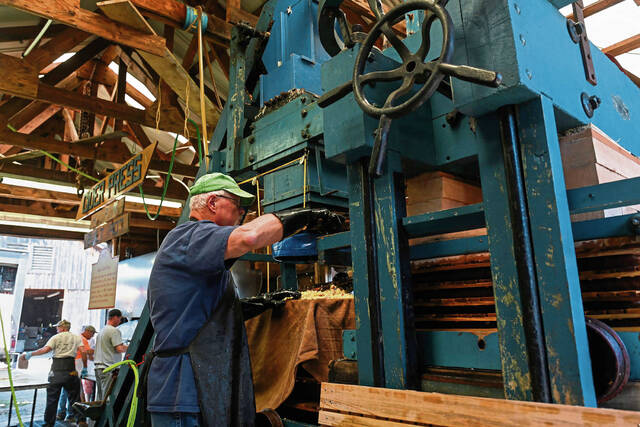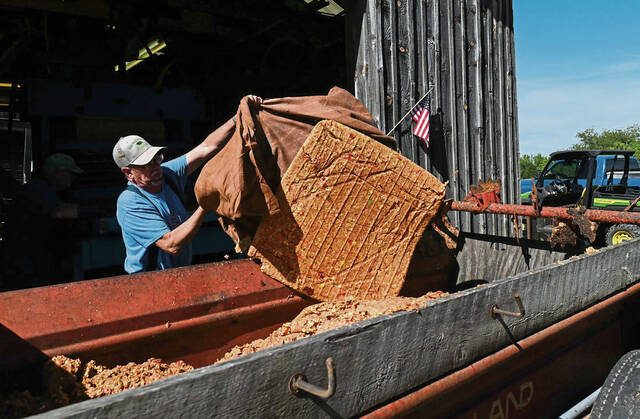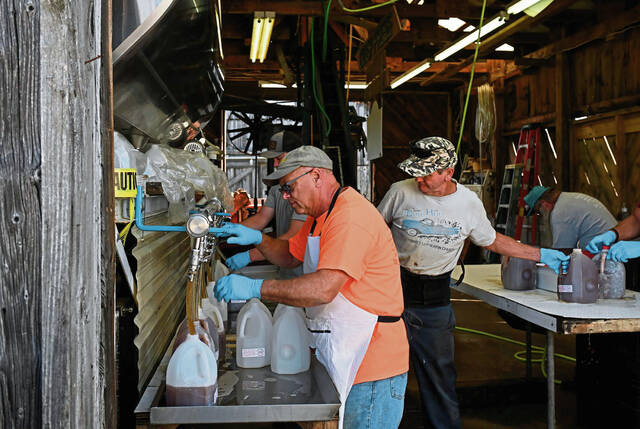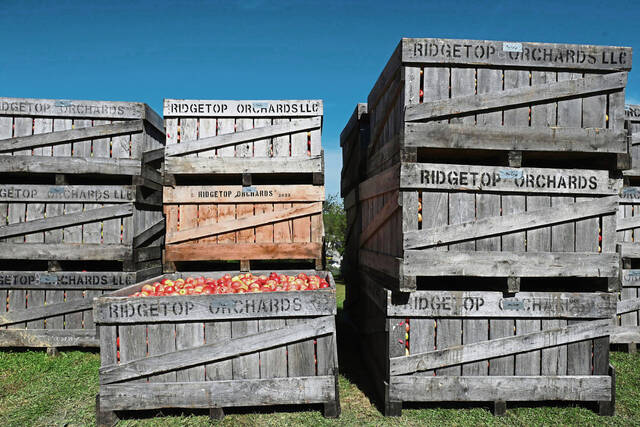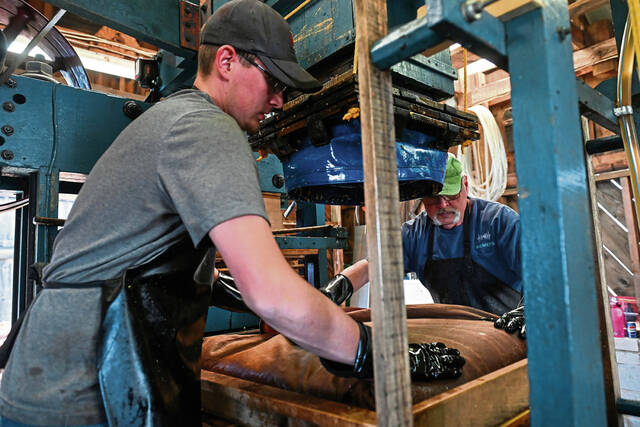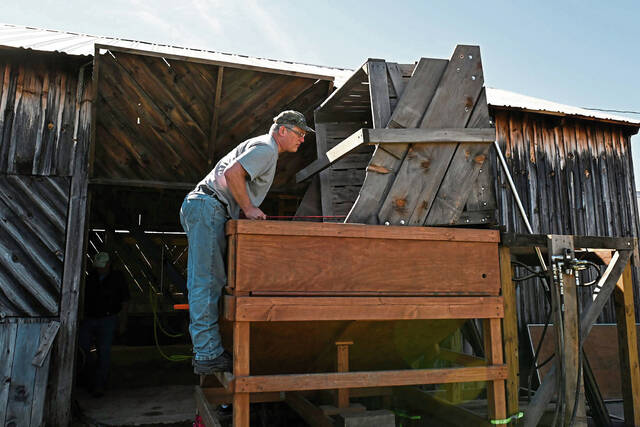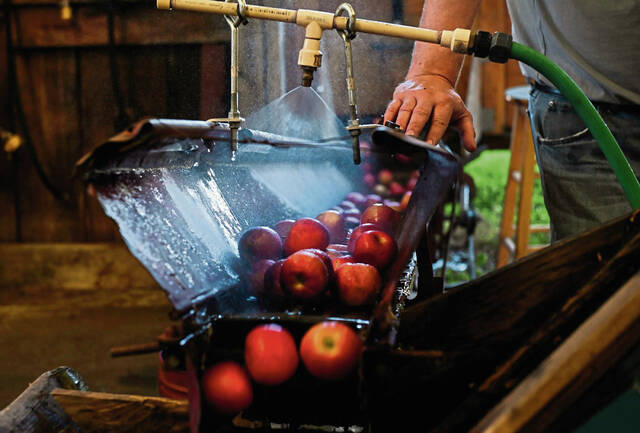Pennsylvania apple growers more concerned with weather than tariffs
Thousands of people are descending on the Delmont area this weekend for the annual Apple ’n Arts Festival, drinking cider, eating apple pie or just enjoying the crispy crunch of a fresh apple in autumn.
And while there is no shortage of apples to go around, the larger industry has come under pressure from poor weather locally and, to a lesser extent, political maneuvering nationally.
“The biggest thing that’s out of our control is the weather,” said Eric Voll, vice president at Soergel Orchards in Franklin Park. “The drought we’ve had the past few growing seasons has had a real impact.”
Soergel is one of the larger orchards in Western Pennsylvania. Much of the large-scale apple production is concentrated in the south-central part of the state, but it is dwarfed by the massive orchards on the West Coast, particularly Washington state.
Even so, Pennsylvania farms produce between 400 million and 500 million pounds of apples each year, according to the Pennsylvania Department of Agriculture, making it fourth in the nation for apple production.
“This strong variation in seasonal weather patterns is something to be concerned about,” said Shanthanu Krishna Kumar, assistant professor of tree fruit science at Penn State University’s main campus. “On April 9 this year, we had a very cold weather event in Pennsylvania, and we also had a lot of rain in April and May, which made it hard for fruit tree growers even to plant. And now these past two months, we’ve barely had any rain. A lot of Western Pennsylvania fruit tree farms are rain-fed.”
In addition to the weather, shifting political winds have also bred some uncertainty.
In 2019, when President Donald Trump imposed tariffs on steel and aluminum from India, the Indian government responded with, among other import taxes, a retaliatory 20% tariff on apples. When that happened, Washington farmers’ exports fell by 99%. It also meant West Coast orchard owners were sending their apples to the eastern U.S. to be sold, competing with local growers.
Voll wasn’t concerned about the tariffs — 95% of Soergel’s apples are sold locally, and a very small portion is wholesaled to partner farms — but a flood of Washington apples caused a drop in prices across the domestic market.
And with the U.S.-Mexico-Canada Trade Agreement up for review in 2026, there is uncertainty about where apples and other fruit crops may land on the tariff scale. In July, the vast majority of apple exports from the U.S. went to Mexico and Canada. For Washington growers, who account for 78% of the nation’s apple exports — most of which now go to Mexico — the future of the U.S.-Mexico-Canada Trade Agreement is a potential financial driver that must be taken into account.
“The biggest threat is the market pressures of pricing,” Kumar said. “That is what the apple industry has been battling for several years.”
Pennsylvania is fifth in the country when it comes to apple exports, according to industry group U.S. Apple. The top market for those apples is Bermuda, which has not been among the targets for new U.S. tariffs.
That’s good news for John Lott, president of Bear Mountain Orchards, north of Gettysburg.
“We go through a broker, Cohen Produce Marketing in Camp Hill, and we’ve sent apples to a few places in the Caribbean,” Lott said. “Washington state grows 15 times more apples than us, but for the Caribbean market, it’s very hard to do ‘just-in-time’ fruit delivery from Washington.”
“But we can ship from Baltimore, Delaware or Miami and get containers to the Caribbean very quickly,” he said.
Most of Bear Mountain’s apples, grown on more than 1,000 acres in Adams County, are sold domestically. Lott said Caribbean countries get most of their apples from Chile, which has a different growing season than the U.S.
“When they run short, we can export to some of those countries and fill that gap,” Lott said.
Politics has also played a role in U.S. farm labor. Changes to the U.S. immigration system have complicated the way some farms hire laborers to harvest apples, especially if those laborers are from outside the country.
“There have been a lot of complaints about the existing H-2A system and the difficulty that small- to medium-sized farms have navigating those complexities,” Kumar said.
At Soergel, a strong workforce hasn’t been an issue.
“At our peak right now, we have 225 people on staff, full and part time,” Voll said. “The majority are students who help on the weekends for festivals and events, but we haven’t had any problem hiring. It’s partly because we have a great hiring team, but we’re also in a highly populated area between two big school districts (Pine-Richland and North Allegheny), so we have a lot of repeat staff who come back each year and bring friends.”
Lott said he hasn’t had any problems with H-2A workers.
“We pay for the work visas, transportation and housing,” he said. “It’s a good relationship, and we’re not taking jobs away from domestic workers, because domestic workers won’t take them.”
In its report on the state of the industry heading into 2025, U.S. Apple’s analysts said the effects of the Trump administration’s trade war have yet to take full shape for U.S. growers.
“On the one hand, the administration’s aggressive and unpredictable tactics may be uniquely suited to break longstanding unfair trade practices. It would be a significant win for the industry to gain access to new markets like Japan or South Korea who utilize non-tariff-related phyto-sanitary requirements to keep U.S. apples out,” analysts said in the report. “On the other hand, provoking Mexico and Canada into placing retaliatory tariffs on U.S. apples would be disastrous. Those two countries alone are responsible for around half of total fresh apple exports, worth nearly half a billion dollars annually.”
Patrick Varine is a TribLive reporter covering Delmont, Export and Murrysville. He is a Western Pennsylvania native and joined the Trib in 2010 after working as a reporter and editor with the former Dover Post Co. in Delaware. He can be reached at pvarine@triblive.com.
Remove the ads from your TribLIVE reading experience but still support the journalists who create the content with TribLIVE Ad-Free.

